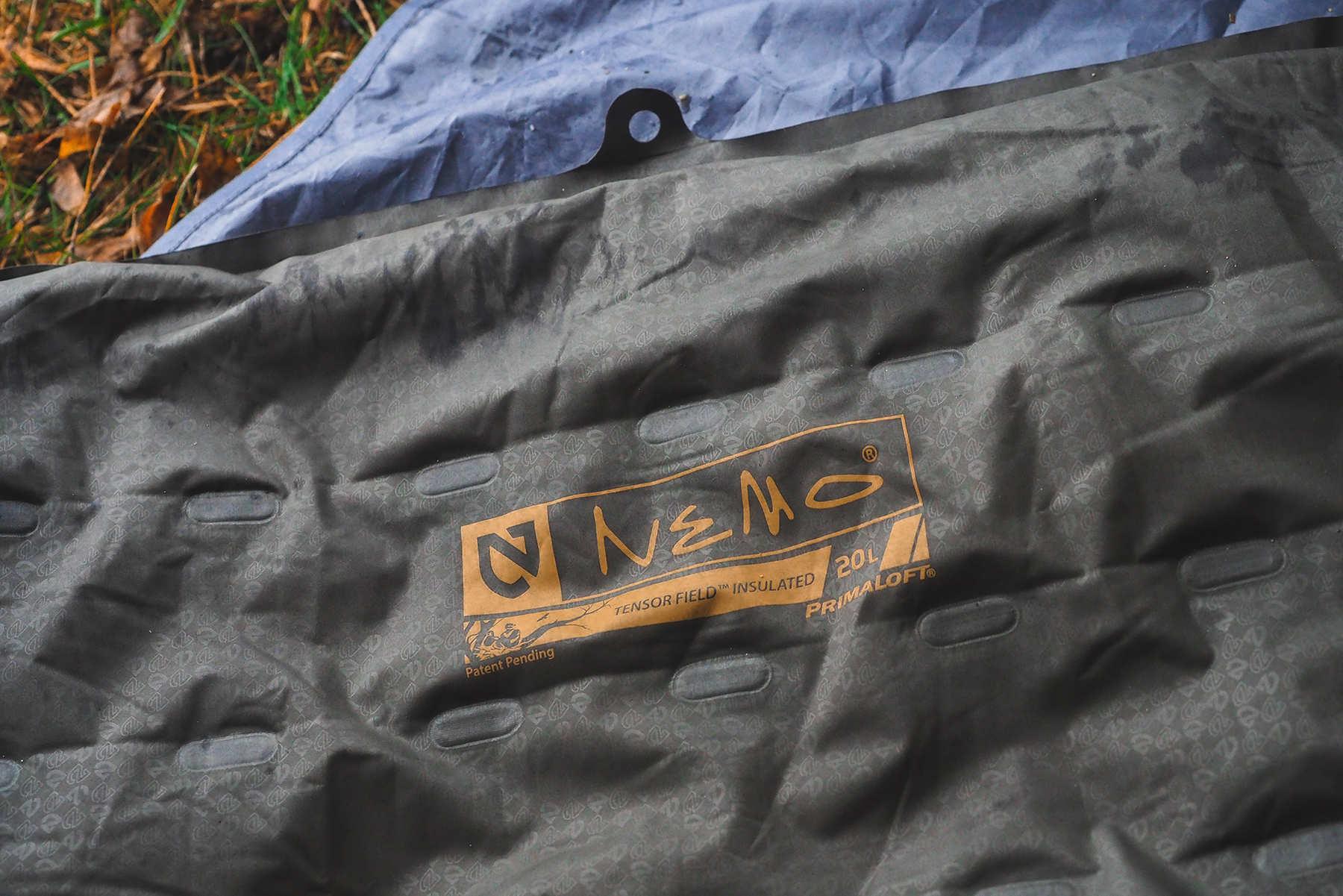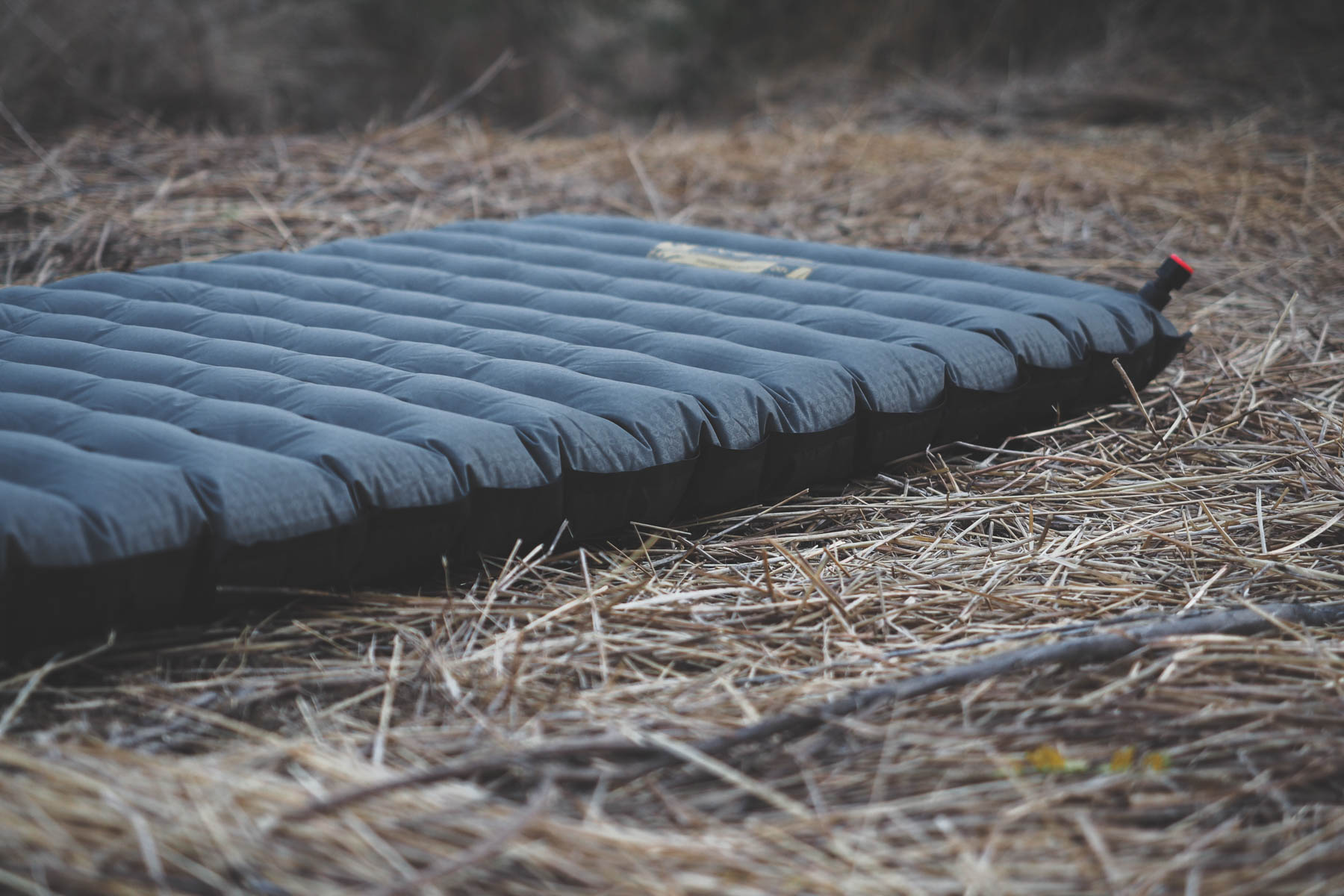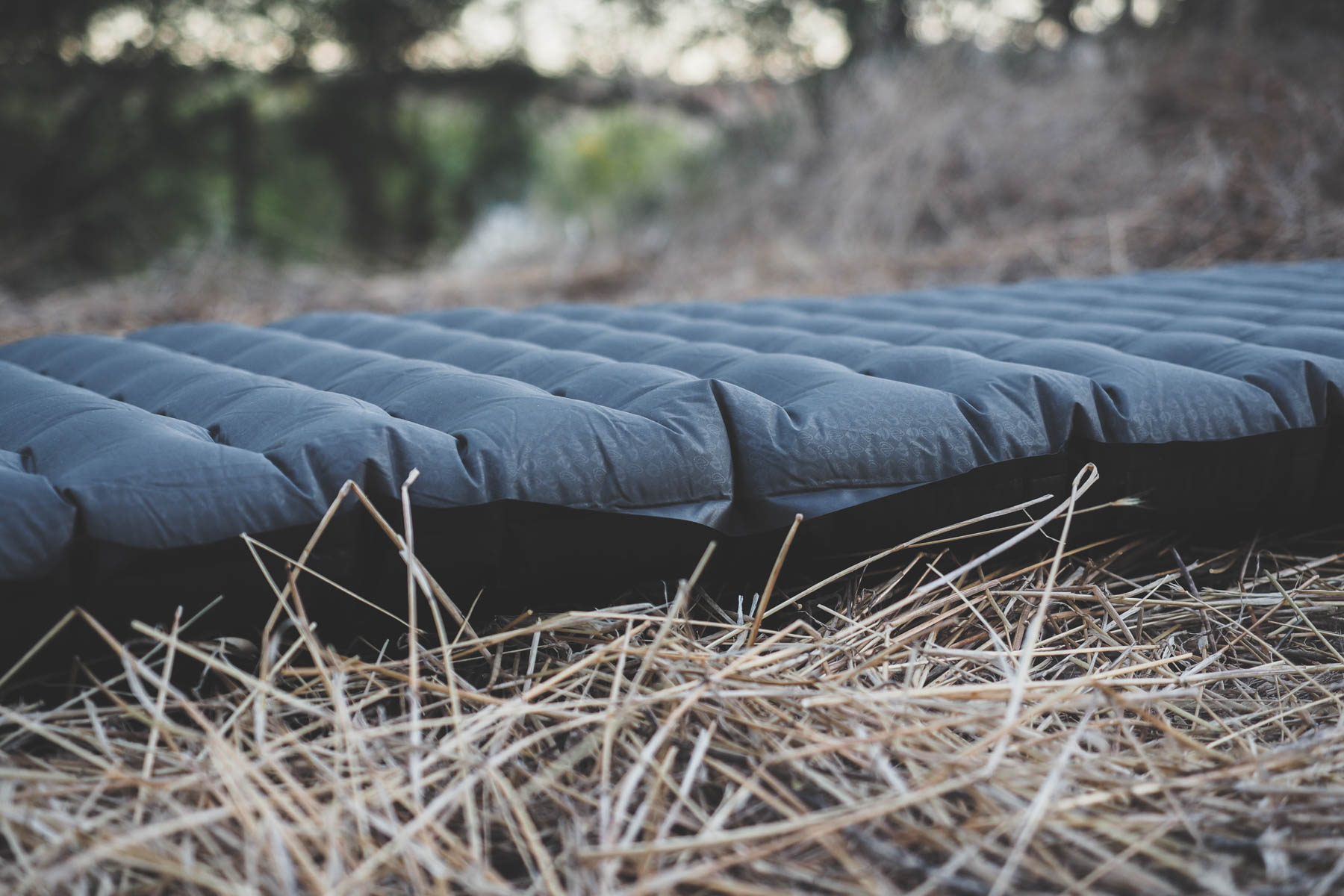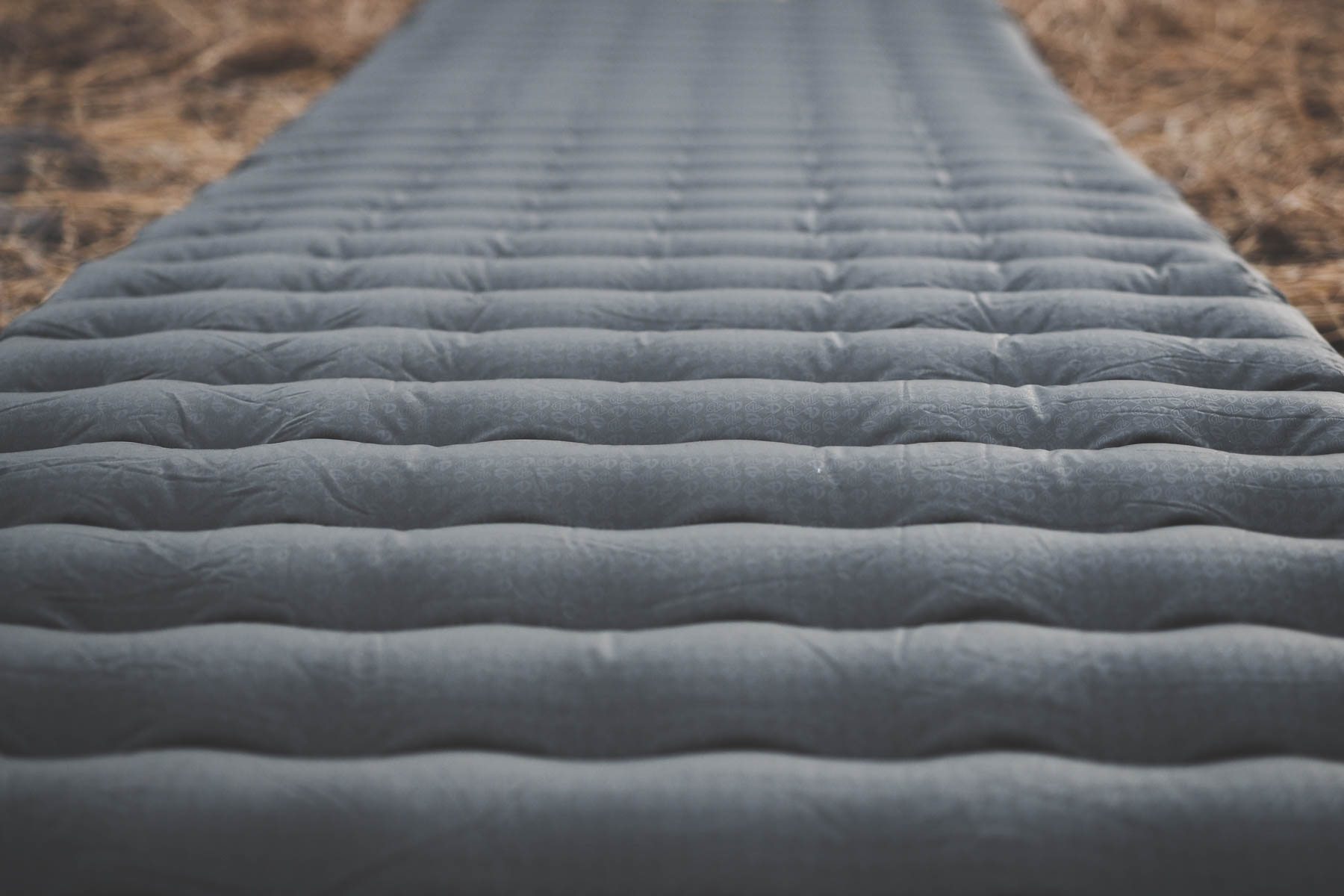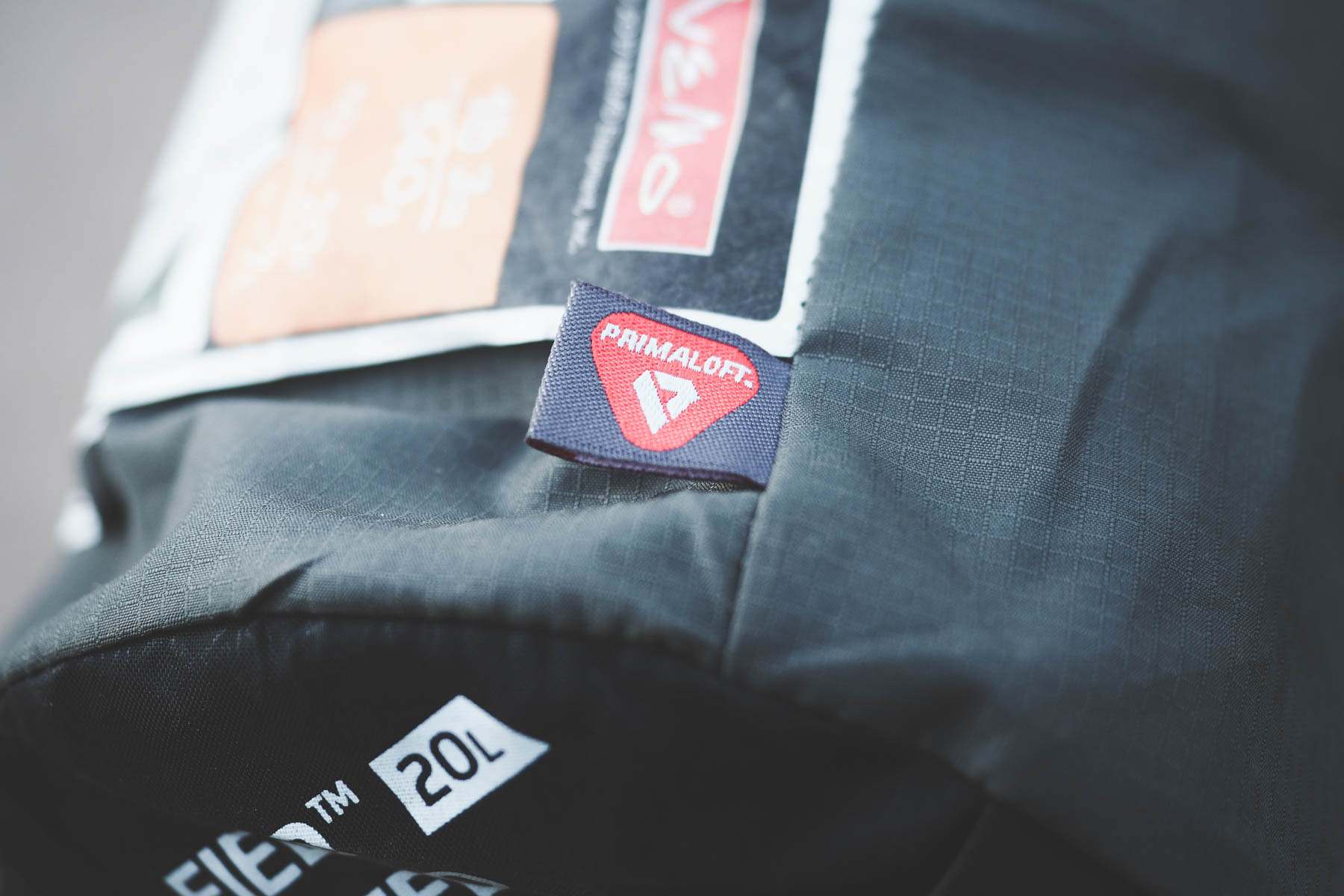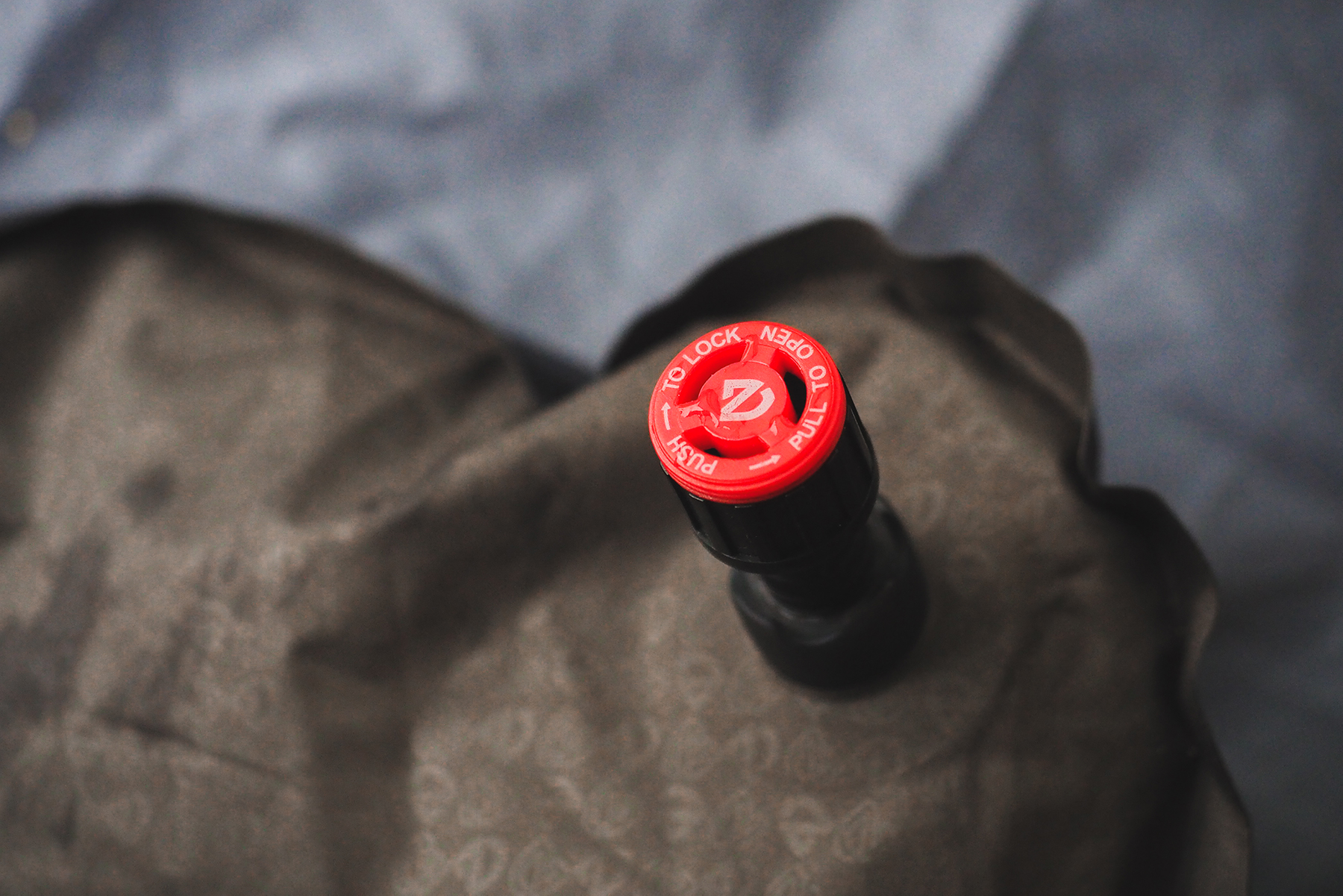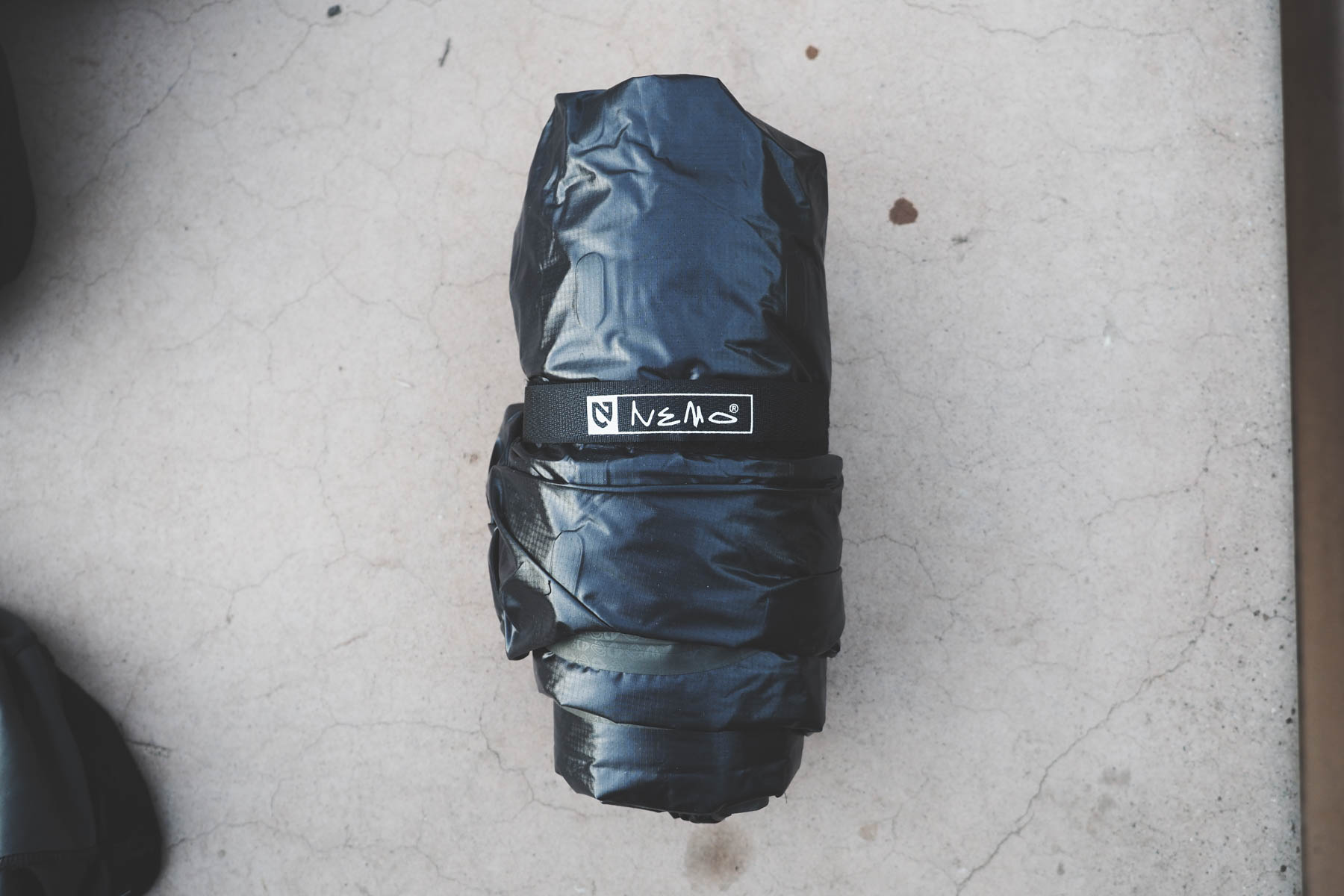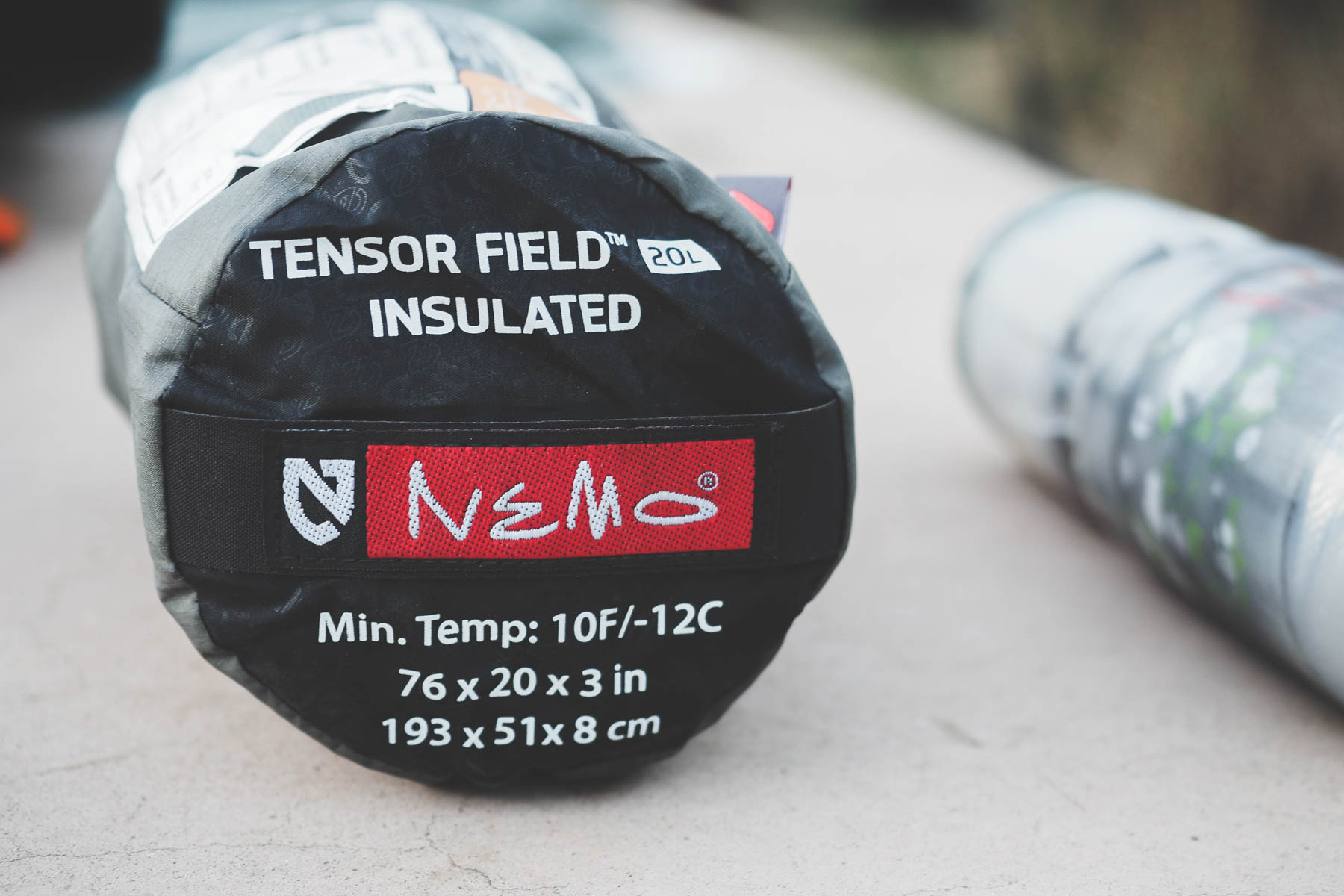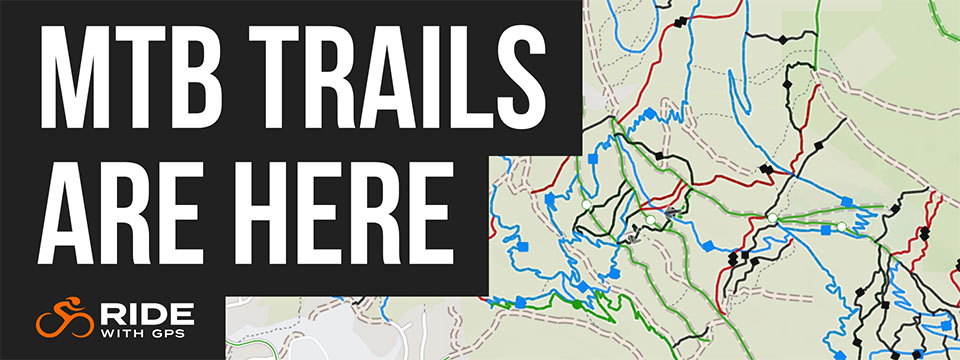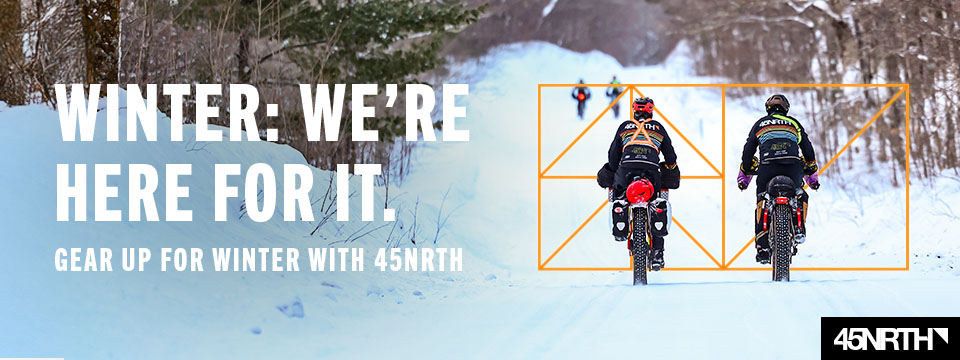Nemo Tensor Field Insulated Sleeping Pad Review: Tactical Comfort
We often pay a price for choosing the lightest and most compressible camping gear. Narrow and tapered, paper thin fabrics, and UL doesn’t always jive with heavier riders, those with broad shoulders, or those just looking for maximum comfort. Nemo’s new Tensor Field Insulated line of sleeping pads are incredibly plush, offer increased durability, and will definitely appeal to those venturing off the beaten path during the fall and winter months.
PUBLISHED Dec 27, 2017
Nemo’s line of Tensor sleeping pads have been around for a while, all sporting a lightweight 20D Polyester Ripstop fabric, options for insulation, and claimed weights between 385g and 540g depending on the length and width you choose. They offer a great balance of weight and warmth for a rectangular sleeping pad and won’t cost you an arm and a leg. However, the Tensor Field lineup is a new addition for 2017, catering to a slightly different audience that won’t mind a slight increase in weight for added durability and a warmer night’s sleep.
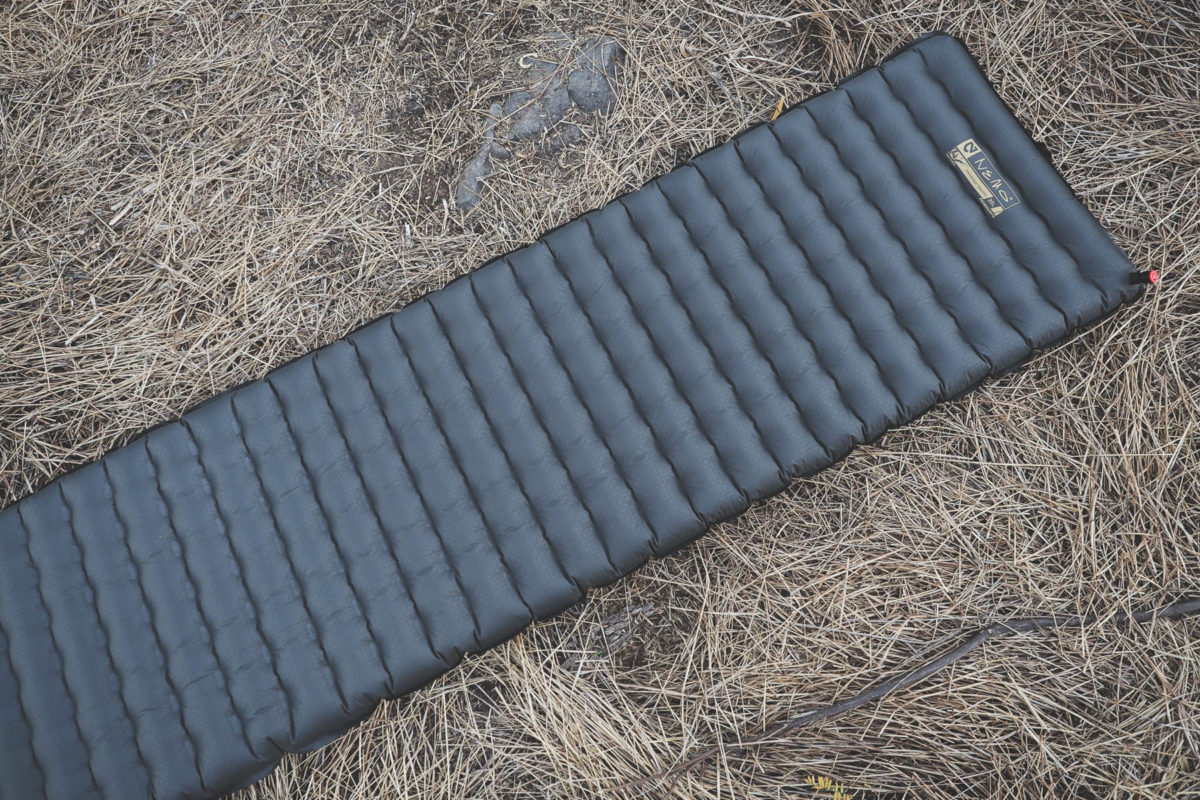
Both the Tensor and Tensor Field sleeping pads utilize the same Space Frame baffles, which simply refers to the top and bottom sheet being connected via a sort of internal truss. This adds to the pad’s stability and comfort, which are definitely two of the Tensor Field’s best features. I found when rolling around, something I do regularly throughout the night, the pad’s thickness was consistent and predictable. When propped up on an elbow reading before bed, there was no contact with the ground, the same can not be said for other lighter weight sleeping pads I’ve used.
On the bottom sheet, an aluminized film helps reflect unwanted cold from the ground and preserve the heat produced from your body. A PrimaLoft layer within the top sheet further insulates you from your chilly surroundings, even if it becomes wet. I brought the Tensor Field along on my recent trip to Arizona while I rode the Fool’s Loop, where nighttime temperatures hovered around 40F (4C), and I’ll be the first to admit my sleeping bag wasn’t quite cutting it and I foolishly did not pack my trusty fleece liner either. With that said, it was clear that it was my exposed side of my body that was feeling the chill, and whatever parts of me were pressed against the Tensor Field definitely stayed warmer longer. The pad is rated for 10 to 20F (-12 to -7C), as Nemo does not provide an R-Value (this would translate to a R-value of 5 or 6), but I had no problems with overheating during nights warmer than this. You won’t have any complaints sleeping on this pad during chilly fall nights or winter excursions when extra insulation is essential.
What I really noticed was the amount of room I had to spread out and roll around during my evenings. This was the first pad I could comfortably sleep on my back, hands on my chest, without my elbows completely slipping over the edge of the pad. I know I’ll appreciate the increased surface area during winter exploits this winter as I often use floor-less tarp shelters in the snow, and sliding off a tapered sleeping pad apparently comes naturally to me. No taper, no problem.

As you can likely imagine, the Tensor Field 20L doesn’t pack down quite as small or weigh quite as little as some of the sleeping pads we’ve recently reviewed. The packed size might be comparable to some, but there was definitely an extra bit of heft due to the insulation and heavier 30D underside. That being said, the long version tested easily rolled up into a 9” x 4” sausage without much effort or wizardry. One thing to note is that Nemo is still using a simple two-way valve which, for the longest time, was the industry standard. My assumption here is that they tend to last forever, which bodes well with the burly nature of this pad, compared to pads like the Big Agnes Q-Core and the Sea To Summit Pads that use a dual-valve system that offers super fast deflation and potentially quicker inflation as well.

On the first day of my Arizona trip, I bumped into a dude on a fatbike rigged up for hunting. We got to chatting about his choice of bike, and the practicality of big tires for heavier riders and for hauling hunting gear. I think that Nemo’s Tensor Field sleeping pad would fit right in with this kind of rider, without getting to specific, but even the tactical colourway of the pad will be attractive from a hunting / angling aesthetic. That’s coming from someone who doesn’t know the first thing about hunting.
Material and Weight Comparison
One difference I came across was that Nemo is choosing to use a ripstop polyester for their pads and both Thermarest and Sea To Summit use the more familiar ripstop nylon. It seems that nylon has a tendency to absorb water, and expand slightly when doing so, where polyester is not affected as polyester fibres are hydrophobic. I would imagine these characteristics would be much more applicable to tarps and tents, after all, this explains why we often see our nylon rain flys sagging in even just a light rain. It is also said that polyester is generally heavier, thicker, and therefore more durable than nylon, which explains the range of deniers between some of the sleeping pads listed below. As a quick refresher, the denier of a fabric refers to the actual thickness of fibres that make up the material. The higher the denier, the thicker the yarn diameter, although this doesn’t always mean stronger or more durable.
Insulated Sleeping Pads Compared
| Product | Weight | R-Value/Temp | Bottom Fabric Denier | Price |
|---|---|---|---|---|
| Nemo Tensor Field Insulated 20 (long) |
21.6 oz
614 g
|
10-20F | 30d Polyester | $179.95 |
| Thermarest NeoAIR Xtherm (long) |
20 oz
570 g
|
5.7 | 70d Nylon | $239.95 |
| Sea To Summit Comfort Light Insulated (long) |
26.6 oz
755 g
|
4.2 | 40d Nylon | $189.95 |
| Nemo Tensor Insulated 20 (long) |
15.7 oz
455 g
|
15-25F | 20d Polyester | $159.95 |
I think the only true test of durability comes down to a very long term review, but until then, the 30d polyester base on the Tensor Field pad feels slightly more tacky and less slippery compared to Sea To Summit’s Comfort Light Insulated pad that I also have been using. At this point it’s difficult to say whether or not this translates over to the toughness of the base material.
Pros
- Well insulated with reflective bottom and PrimaLoft top.
- Added durability on the bottom of the pad.
- Reasonably packable and comparable in size to ultralight options.
- Lots of room to roll around, prop up to read, or parktake in other nighttime festivities.
Cons
- Heavier than some may want.
- Valve is pretty standard.
- Not quite as packable as other insulated options… but pretty darn close!
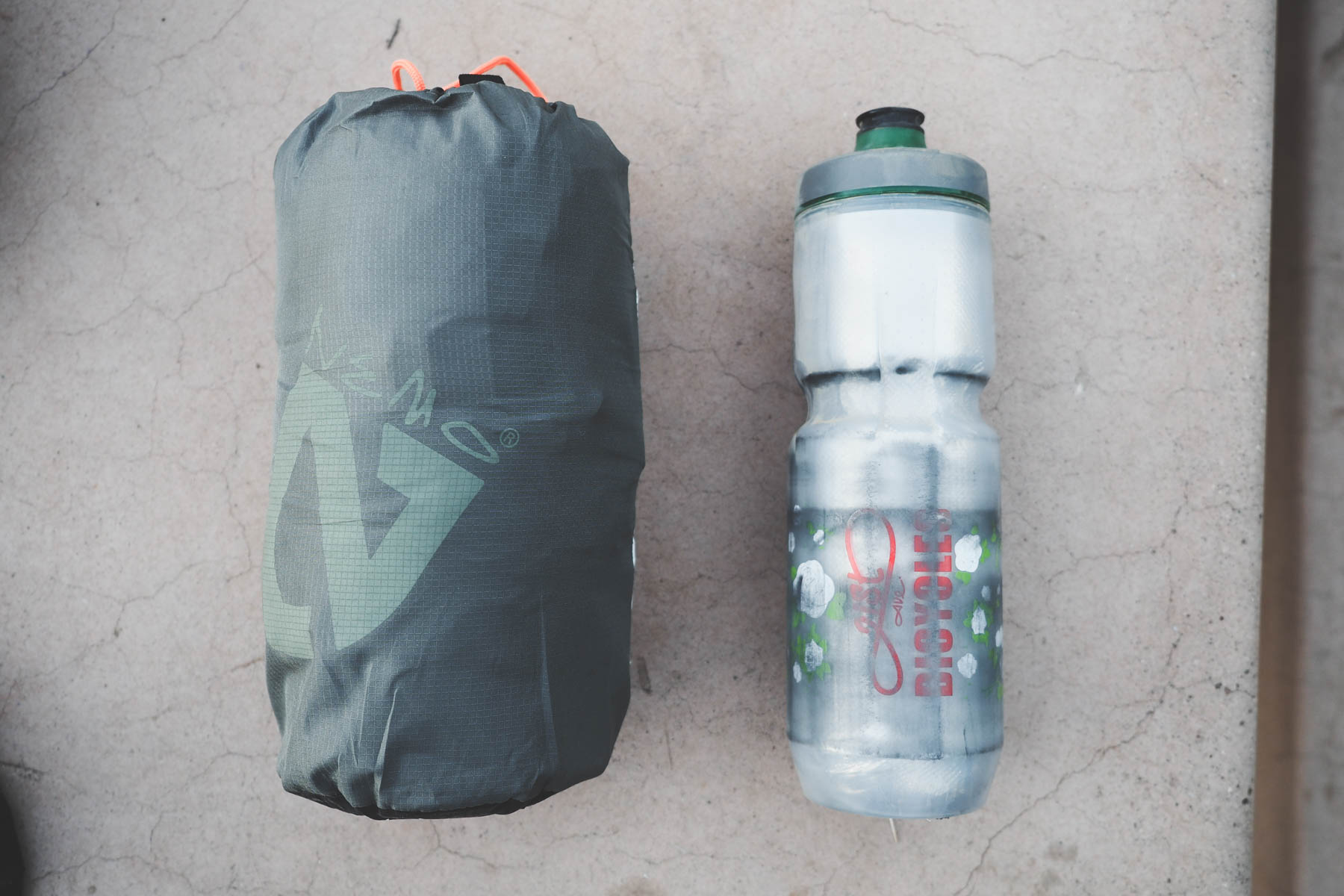
SPECS
- Model Tested: Nemo Tensor Field Insulated 20L
- Weight (as tested/2017 version): 21.6oz (614g)
- Price: $179.95
- Packed Size: 9″ x 4″ (23cm x 10cm)
- Thickness: 3″ (6cm)
- Place of manufacture: China
- Contact: NemoEquipment.com
Check the price at REI
Wrap Up
I’ve used plenty of sleeping pads, most of them being tapered and slightly too short for me, and to be honest I haven’t paid that much attention to the different width options that exist out there. Nemo’s Tensor Field Insulated pad was noticeably more comfortable than the ultralight pads I normally use; which I thought to be decently comfortable as well…until now. Although it may not be the lightest option out there, it isn’t trying to be, and it still packs down reasonably small for those with limited packing space. The Tensor Field pads will be appealing to those who are rough on their gear, are truly venturing off the beaten path, or simply want one of the most comfortable sleeping pads available.
As mentioned, the Nemo Tensor Field Insulated Sleeping Pad is relatively new. So far I’ve used it on a 4-day bikepacking trip in the desert of Arizona, and several more this fall in British Columbia, so this is by no means a long term review. However, based on using it I think it will be a solid sleeping pad that will stand up to some use. I’ll be sure to update this post down the road.
Disclosure: The Nemo Field Tensor Insulated 20L was provided for this review by Nemo.
Please keep the conversation civil, constructive, and inclusive, or your comment will be removed.

We're independent
and member-supported.
Join the Bikepacking Collective to make our work possible:







